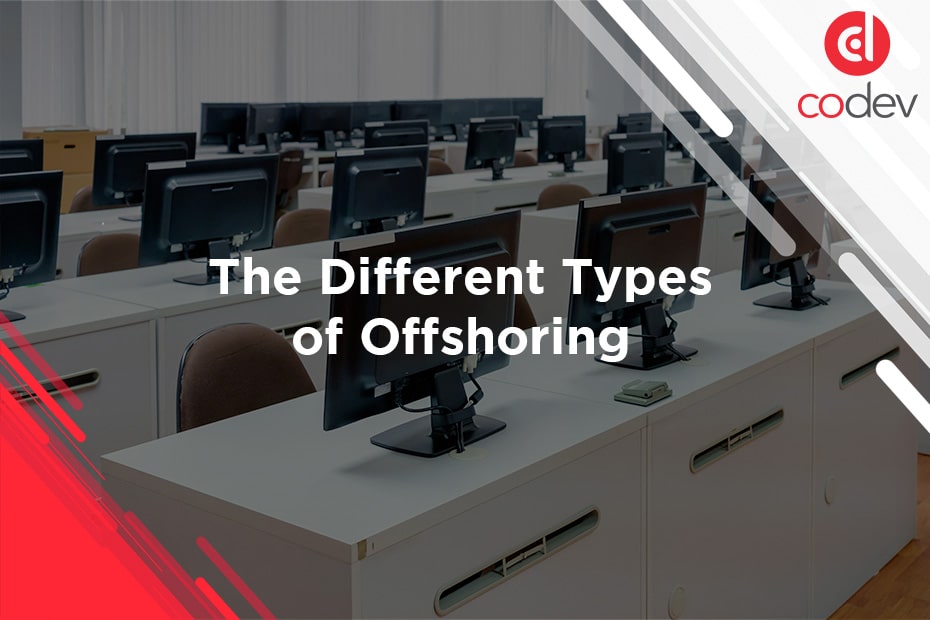What is offshoring? And how is it different from outsourcing? Learn the answers to these questions and more about offshoring.
Offshoring– you may have heard of the word and are curious to find out more about it, especially because it’s often associated with lowering a company’s operating costs.
However, that’s not all that offshoring does.
While cutting costs is certainly one of the primary reasons many companies choose to offshore, there are actually a few different kinds of offshoring, each of which offers a unique set of benefits as well as disadvantages. But before we venture into these different types, let us first answer one pivotal question:
What Is Offshoring?
Offshoring is often confused with terms like outsourcing, which is understandable considering that both terms can refer to the same thing; however, they are defined differently. Outsourcing is the act of transferring operational activities typically performed in-house to external suppliers or companies. Offshoring on the other hand, also refers to the transfer of operational activities particularly to another country. Offshore software development, electronics manufacturing (as done by Apple with their China-based manufacturing firms), and sportswear manufacturing (as done by Nike), are some of the most common examples of offshoring.
Offshoring is often done to reduce the cost of personnel or resources. For example, an electronics manufacturing company may choose to offshore its operations to another country where labor and the price of raw materials are cheaper, and both are more readily available. Doing so allows the company to produce products more cost-effectively, without sacrificing the quality or quantity of products produced. With the money saved, they can invest more in other areas of the business, such as product design and development.
By delegating some operational activities elsewhere, offshoring also allows businesses to focus on their core business operations. With all these and many other advantages combined, offshoring gives businesses a leg up over their competitors.
Types of Offshoring
Offshoring seems quite straightforward, but it can be divided into other categories. Its two main categories are:
- Farshoring – Farshoring is when a company offshores to distant countries, usually those in another continent. This means that there will be time zone differences, as well as cultural differences and possibly language and communication barriers. Long-distance transportation may also be required to transport items to the offshore location.
Farshoring can be very beneficial, as costs can be greatly minimized especially in offshore locations like those in Asia. In order to reap the most benefits while minimizing common barriers when farshoring, it’s important to choose an established and experienced offshoring company. Such companies will have flexible working hours to adapt to your preferred work times; use stable communication mediums and practices; and have security measures in place.
Farshoring is often viewed as synonymous with offshoring, but this is not the only type of offshoring.
- Nearshoring – Nearshoring is when a company outsources its business processes to companies in nearby countries, often sharing a border with the country where they are currently operating. You might wonder why a company would opt to nearshore if the target location is just close by. Companies opt for nearshoring for the same reasons most companies would opt for offshoring: to reduce costs and maximize business efficiency. American companies, for instance, would often nearshore to Mexico in order to lower operating costs. With nearshoring, companies often don’t have to concern themselves with different time zones, cultural differences, language barriers, and other issues that may come up with for shoring.
Nearshoring, however, is not applicable for all industries and for all countries. Since nearshoring happens with two nearby countries, the difference in cost-savings may only be minimal, and may not be enough to outweigh the cost and effort needed to nearshore.
Offshoring can also be categorized according to what is being offshored:
- Production Offshoring – This is when a company offshores its manufacturing unit, importing the finished products from the offshore location to sell in the domestic market. Apple, as we’ve already mentioned, is a good example of this. The electronics company manufactures most of its products in China, where labor and raw materials are cheaper, and imports the final electronic products to the US and around the world.
- Services Offshoring – This is when a company sets up units in other countries to perform service-related operations. Some common examples of this are offshore software development, customer service, accounting, and marketing.
Unlike production offshoring, services offshoring often does not require companies to regularly travel to offshore locations or have items shipped. Offshore outsourcing companies can source, screen, supervise, and fully equip offshore skilled workers for them. This makes services offshoring a very viable option especially for small to medium businesses seeking to get an edge over their competitors and grow their business without having to spend too much money.
Boost Your Business by Offshoring with CoDev
If you’re interested in this last type of offshoring, you can learn more and get started with CoDev.
CoDev is a Utah-based offshore outsourcing company that’s been operating for over a decade, providing hundreds of companies with competent offshore workers. Whether you need people for offshore iOS development, offshore Android development, or online customer service, we can provide you with the highly qualified offshore IT staff that you need. Our talent pool spans the entire Philippines, and our process is fast, simple, and proven.
By offshoring with us, you can be assured of high-quality offshore talent that’s half the price of onshore and even nearshore solutions. Each hire is meticulously screened, ensuring English language proficiency and the exact technical expertise you’re looking for. Once approved by you, they can start working with you right away and at the same shift schedule as you do.
Learn more about our process here, see what our clients have to say, or get in touch with us today!
